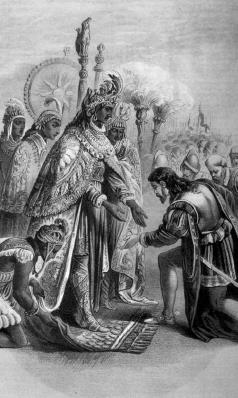Exploration and SettlementChristopher Columbus |
How did America get its name? |
America is derived from the name of Italian navigator Amerigo Vespucci (1454–1512), who took part in several early voyages to the New World. Vespucci had been a merchant in service of the Medici family in Florence and later moved to Spain where he worked for the company that outfitted the ships for Christopher Columbus’s (1451–1506) second and third voyages. He sailed with the Spaniards on several expeditions (in 1497, 1499, 1501, and 1503). Though scholars today question his role as an explorer, in a work by German geographer Martin Waldseemüller (c. 1470–c. 1520) published in 1507, the author credited Vespucci with realizing that he had actually arrived in a New World—not in the Far East as other explorers (including Columbus) had believed. Thus, Waldseemüller suggested the new lands be named America after Amerigo Vespucci. For his part, Waldseemüller was led to believe this by Vespucci himself who had written to Lorenzo de Medici in 1502 or 1503, relaying his discovery of a new continent and vividly describing it. About a year later, the letter was published under the title Mundus Novus (New World), which was translated and published in future editions.
The designation America was used again in 1538 by Flemish cartographer Gerardus Mercator (Gerhard Kremer; 1512–1594). Today the term in the singular refers to either continent in the Western Hemisphere and sometimes specifically to the United States. In the plural, it refers to all of the lands of the Western Hemisphere, including North and South America and the West Indies.

